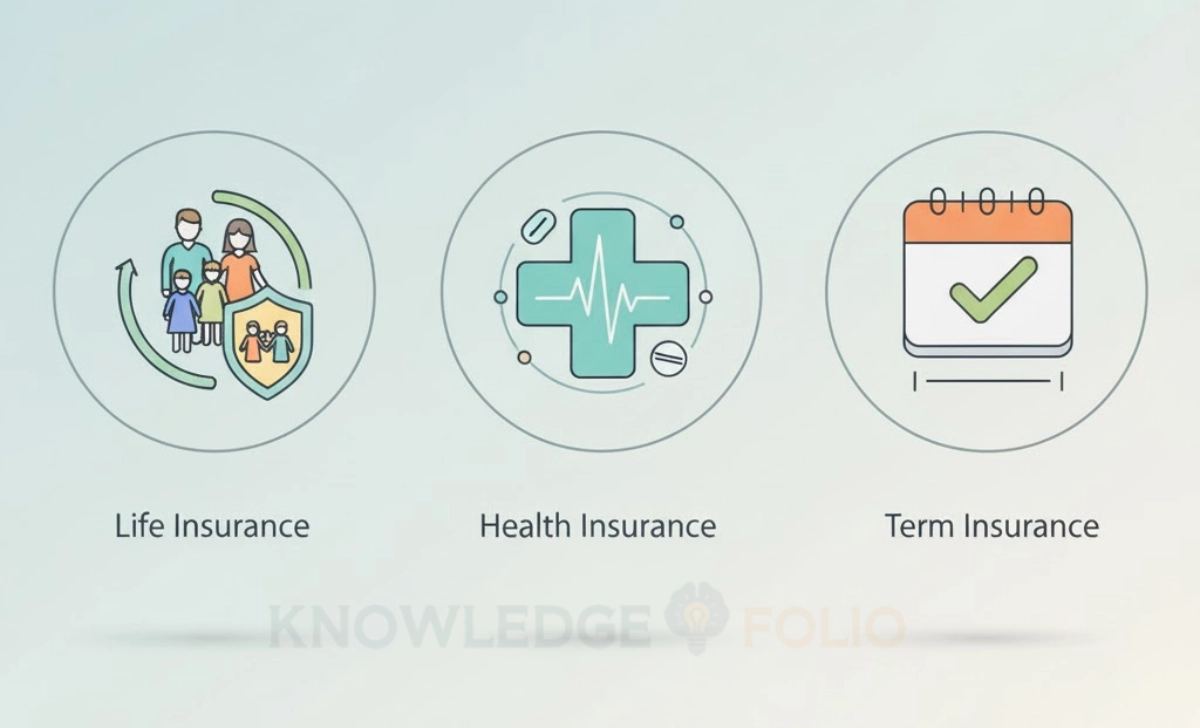To compare insurance policies easily, follow three steps: first, list your coverage needs and budget; second, use online comparison tools to gather quotes from multiple insurers; third, create an apples-to-apples comparison table that evaluates coverage limits, exclusions, premiums, and provider reputation—not just price alone.
Shopping for insurance can feel like decoding a foreign language. You’re bombarded with jargon, endless policy options, and quotes that all look similar on the surface but hide crucial differences in the fine print. If you’ve ever wondered how to compare insurance policies easily without second-guessing every decision, you’re in the right place.
This guide walks you through a simple, buyer-friendly process for comparing life, health, and term insurance. You’ll get practical checklists, real comparison examples, and actionable tips that cut through the confusion. By the end, you’ll know exactly what to look for—and what to avoid—so you can choose a policy with confidence.
Whether you’re a first-time buyer or just tired of feeling overwhelmed, let’s make insurance comparison straightforward and stress-free.
What Are the Major Types of Insurance and Why Does Comparison Matter?
Before you start comparing, it’s essential to understand what you’re actually comparing. The three most common types of insurance for new buyers are life, health, and term insurance. Each serves a different purpose, covers different risks, and comes with unique features that affect how you’ll use it.
Comparing policies isn’t just about finding the cheapest premium. It’s about understanding what you’re getting for your money—the coverage limits, exclusions, waiting periods, and renewal terms. A policy that looks affordable upfront might have significant gaps that leave you exposed when you need it most. That’s why a proper comparison goes beyond the price tag and digs into the details that truly matter.
Let’s break down each type so you know what to look for.
1. Life Insurance – Definition, Typical Features, When You’d Need It
Life insurance pays a lump sum to your beneficiaries when you pass away. It’s designed to replace your income, cover debts, or provide financial security for your family. Policies can be permanent (covering you for life) or term-based (covering a set period). New buyers often choose life insurance when they have dependants, a mortgage, or other financial responsibilities that would burden their loved ones.
Typical features include a death benefit, optional riders like total and permanent disability cover, and the ability to adjust coverage as your circumstances change. When comparing life insurance, focus on the benefit amount, policy term, premium structure, and any exclusions related to pre-existing conditions or high-risk activities.
2. Health Insurance – What It Covers, Typical Exclusions, How It Works Alongside Life/Term
Health insurance covers medical expenses like hospital stays, surgery, specialist consultations, and sometimes extras like dental or physio. In Australia, you can choose private health insurance to complement Medicare, which gives you faster access to treatments and more choice in providers.
Common exclusions include pre-existing conditions (often with waiting periods), cosmetic procedures, and experimental treatments. Health insurance works alongside life and term insurance by addressing your immediate medical costs, while life and term policies focus on income replacement or death benefits. When comparing health policies, check the level of hospital and extras cover, waiting periods, annual limits, and whether your preferred providers are included in the network.
3. Term Insurance – How It Differs from Life/Permanent Forms, Advantages for New Buyers
Term insurance is a type of life insurance that covers you for a specific period—usually 10, 20, or 30 years. Unlike permanent life insurance, it doesn’t build cash value and ends when the term expires (though some policies offer renewability or conversion options). Term insurance is typically more affordable, making it ideal for new buyers who need substantial coverage on a budget.
The main advantage is cost-effectiveness during your highest-risk years—when you have young children, a mortgage, or significant debts. When comparing term insurance, look at the length of coverage, whether premiums are level or increase over time, and any options to renew or convert to permanent insurance without a medical exam.

Key Criteria to Compare When You’re Selecting a Policy
Once you understand the types, you need a framework to evaluate them. Comparing insurance policies easily means knowing which criteria actually matter and which are just noise. Here are the core elements every new buyer should check before signing anything.
1. Coverage Amount & Benefit Period – What the Policy Pays and for How Long
This is the foundation of any insurance policy. How much will it pay out, and under what circumstances? For life and term insurance, this is the death benefit or sum insured. For health insurance, it’s the annual limit or per-treatment cap.
Also consider the benefit period—how long the coverage lasts. Term insurance might cover 20 years, while health insurance renews annually. Make sure the coverage amount aligns with your actual needs (debts, income replacement, medical costs) and that the benefit period matches your life stage. A policy that expires just when you need it most isn’t much help.
2. Exclusions, Waiting Periods, and Conditions – What Isn’t Covered and When Coverage Starts
Every policy has exclusions—situations or conditions it won’t cover. Common examples include pre-existing conditions, self-inflicted injuries, or high-risk activities like skydiving. Some policies impose waiting periods before you can claim, especially for health insurance (often 2–12 months for specific treatments).
Read the Product Disclosure Statement (PDS) carefully and make a list of exclusions. Ask yourself: do these exclusions affect me? If you have a chronic condition or plan to have a family soon, a long waiting period could be a dealbreaker. When comparing, favour policies with shorter waiting periods and fewer exclusions that impact your circumstances.
3. Premiums, Payment Frequency, and Renewal Terms – Easy-to-Compare Cost Aspects
Premiums are what you pay regularly (monthly, quarterly, or annually) to keep the policy active. But don’t just compare the headline number—look at how premiums change over time. Some policies have level premiums (fixed for the term), while others increase with age or claims history.
Also check the renewal terms. Can you renew without a medical exam? Will premiums spike at renewal? Is there a maximum age for renewal? A policy with a low initial premium but steep increases later might cost more in the long run. Calculate the total cost over the life of the policy, not just year one.
4. Provider Reputation & Claims Handling – Why It Matters
A great policy is worthless if the insurer drags its feet on claims. Research the provider’s reputation by checking reviews, complaint ratios, and claims settlement statistics. In Australia, you can look at ASIC’s MoneySmart website or the Financial Ombudsman Service for complaint data.
When comparing quotes, remember that the cheapest option isn’t always best if the insurer has a poor track record. A slightly higher premium with a reputable provider often means faster claims processing and better customer service when you need it most.
5. Additional Benefits or Riders – Critical Illness, Disability Add-Ons, Convertibility
Many policies offer optional riders—extra features you can add for additional cost. Common examples include critical illness cover (pays a lump sum if you’re diagnosed with cancer, heart attack, etc.), total and permanent disability (TPD) cover, or income protection.
Some term policies also offer convertibility, letting you switch to permanent life insurance without a medical exam. Evaluate which riders genuinely add value for your situation. If you’re young and healthy, a critical illness rider might not be urgent. But if you have a family history of serious illness or work in a physical job, disability cover could be essential.

How to Compare Insurance Policies Easily: A Practical 3-Step Process
Now that you know what to look for, let’s walk through the actual comparison process. This three-step method keeps you organised and ensures you’re making an apples-to-apples comparison.
Step 1: Gather Your Needs and Budget (New Buyer Checklist)
Before you request a single quote, sit down and define your requirements. Ask yourself:
- What am I insuring against? (Death, illness, medical costs?)
- How much coverage do I need? (Calculate debts, income replacement, dependants’ needs)
- What can I afford in premiums without straining my budget?
- Are there any specific exclusions I can’t accept? (Pre-existing conditions, activities)
- Do I need any riders or additional benefits?
Write down your answers. This becomes your baseline for every quote you evaluate. If you’re not sure how much coverage you need, use online calculators (many Australian insurers offer them) or consult a licensed adviser. The clearer you are upfront, the easier the comparison becomes.
Step 2: Use Comparison Tools and Quote Sites
Once you know what you need, gather quotes from multiple insurers. Online comparison platforms let you see several options at once, filtering by coverage type, premium range, and provider. In Australia, sites like iSelect, Compare the Market, and Finder aggregate quotes and highlight key differences.
You can also go directly to insurer websites for detailed quotes. Government resources like MoneySmart provide guidance on what to look for. The goal is to collect at least three to five quotes so you have enough data to spot patterns—like which insurers consistently offer better value or have hidden fees.
Tip: When using comparison sites, make sure you’re entering identical information for each quote (same coverage amount, term length, deductibles). Otherwise, you’re not comparing like with like.
Step 3: Create an Apples-to-Apples Comparison Table and Evaluate Trade-Offs
Now comes the critical step—organising your quotes into a side-by-side comparison. Use a simple table (spreadsheet or paper) with columns for:
- Insurer name
- Coverage amount
- Policy term
- Premium (monthly/annual)
- Exclusions
- Waiting periods
- Riders included
- Provider rating/reputation
Fill in each policy’s details. This visual layout makes it obvious where policies differ. You might notice that Policy A has a lower premium but excludes more conditions, while Policy B costs slightly more but offers better coverage and a shorter waiting period.
Mini Example:
| Feature | Policy A | Policy B |
|---|---|---|
| Coverage | $500,000 | $500,000 |
| Term | 20 years | 20 years |
| Premium (monthly) | $45 | $55 |
| Exclusions | Pre-existing conditions, high-risk sports | Pre-existing conditions only |
| Waiting Period | 12 months for specific conditions | 6 months for specific conditions |
| TPD Rider | Not included | Included |
| Provider Rating | 3.5/5 | 4.5/5 |
At first glance, Policy A looks cheaper. But Policy B includes TPD cover, has fewer exclusions, a shorter waiting period, and a better provider reputation. For an extra $10/month, Policy B delivers significantly more value—especially if you participate in sports or want disability cover.
Checklist: Questions to Ask the Agent or Insurer
Before finalising, ask:
- What happens to my premiums as I age?
- Can I adjust my coverage later without reapplying?
- What’s your average claims processing time?
- Are there any fees for policy changes or cancellations?
- Can you explain each exclusion in plain language?
Tools and Checklists to Use When Comparing Policies
Having the right tools makes comparison faster and less stressful. Here’s what you can use to stay organised and thorough.
Printable Policy Comparison Checklist for New Buyers
Create or download a checklist with blank fields for:
- Policy type (life, health, term)
- Insurer name
- Coverage amount and benefit period
- Premium and payment frequency
- Exclusions and waiting periods
- Riders or add-ons
- Provider rating (check reviews or ASIC data)
- Notes (any special conditions or red flags)
Print one sheet per policy you’re considering. Fill it out as you review quotes, then lay them side by side for easy comparison. This low-tech method works brilliantly and keeps you focused on what matters.
Online Platforms and Comparison Services
In Australia, several platforms aggregate insurance quotes:
- iSelect: Compares health, life, and car insurance from multiple providers
- Compare the Market: Offers side-by-side comparisons with filtering options
- Finder: Provides quotes and expert reviews
- MoneySmart (ASIC): Government resource with calculators and unbiased guidance
These tools save time by showing you multiple options at once. However, not all insurers appear on every platform, so it’s worth checking a few sites and also visiting insurer websites directly for the full picture.
Note: If you’re in a region with fewer automated tools, the printable checklist becomes even more valuable. You’ll need to request quotes manually and compare them yourself—but the process remains the same.
Tip: Save Quotes and Review Annually
Insurance needs change as your life evolves. Save your comparison tables and quotes in a folder (digital or physical) so you can revisit them later. Set a calendar reminder to review your policies annually or whenever you have a major life event—marriage, new baby, mortgage, career change. What worked for you last year might not be the best fit now.

Common Mistakes New Buyers Make—and How to Avoid Them
Even with the best intentions, it’s easy to stumble when comparing insurance. Here are the most common pitfalls and how to sidestep them.
Mistake 1: Focusing Only on the Lowest Premium
It’s tempting to choose the cheapest policy, but a low premium often means lower coverage, more exclusions, or a less reputable provider. You might save $20 a month now, only to discover critical gaps when you file a claim.
How to avoid it: Always compare what you’re getting for the price. A slightly higher premium with comprehensive coverage and a strong provider is usually better value. Remember, insurance is about protection—not just cost.
Mistake 2: Comparing Policies That Aren’t Equivalent
If one quote is for $300,000 coverage with a 15-year term and another is for $500,000 with a 20-year term, you’re not comparing apples to apples. Different terms, limits, and riders make it impossible to judge which is actually better.
How to avoid it: Standardise your quotes. Request the same coverage amount, term length, and deductible/excess across all policies. Only then can you make a fair comparison.
Mistake 3: Ignoring Provider Reputation or Claims Service
A policy is only as good as the insurer behind it. If the company has a history of delayed claims, poor customer service, or high complaint ratios, you’ll regret choosing them—no matter how attractive the premium.
How to avoid it: Research each insurer before you commit. Check reviews on ProductReview.com.au, look up complaint data on ASIC’s MoneySmart, and ask friends or family about their experiences. A few minutes of research can save you months of frustration.
Mistake 4: Not Reviewing the Policy Annually
Your insurance needs aren’t static. You might get married, have children, buy a house, or change jobs—all of which affect how much coverage you need and what type. Assuming your policy is “set and forget” can leave you underinsured or overpaying.
How to avoid it: Schedule an annual policy review. Check if your coverage still matches your current situation and if there are better options available. Many insurers offer loyalty discounts or improved terms for existing customers, but you have to ask.
Conclusion
Learning how to compare insurance policies easily doesn’t have to be a headache. By understanding the key types of insurance, focusing on the criteria that truly matter, and following a clear three-step process, you can cut through the confusion and make a confident decision.
Use the checklist, lean on comparison tools, and avoid the common mistakes that trip up new buyers. Remember, the goal isn’t just to find the cheapest policy—it’s to find the right policy that protects you and your family when it counts.
Take your time, ask good questions, and don’t be afraid to seek advice from a licensed adviser if you need extra guidance. Your future self will thank you.
Call to Action: Download the policy comparison checklist, start gathering quotes today, and take control of your insurance decisions. Have questions or tips to share? Drop a comment below—we’d love to hear from you!



